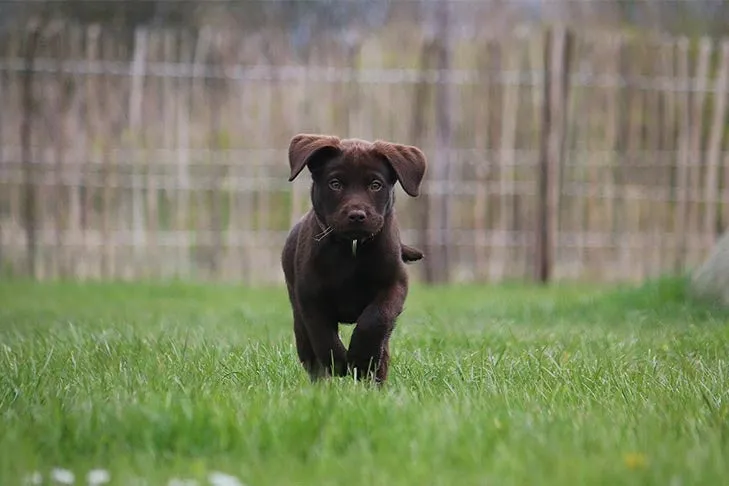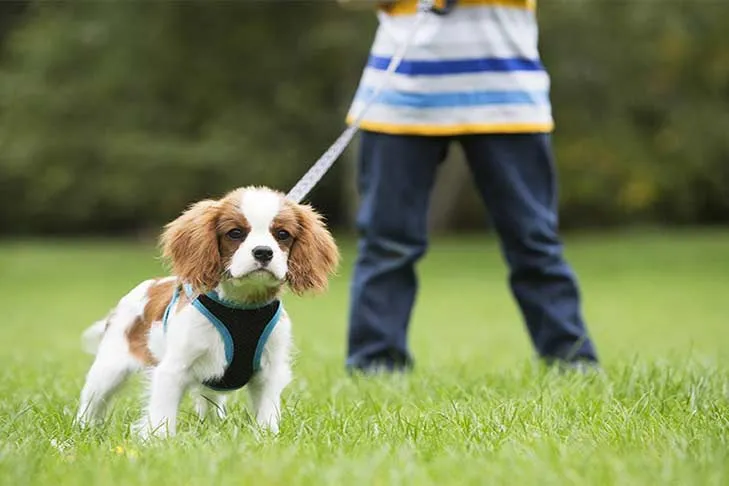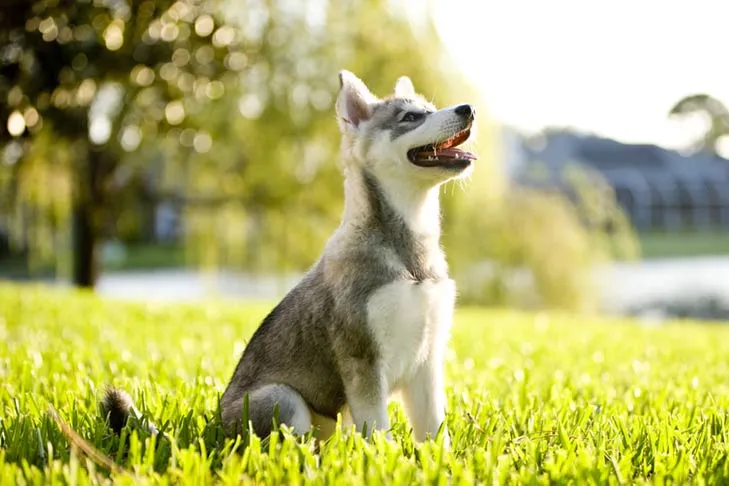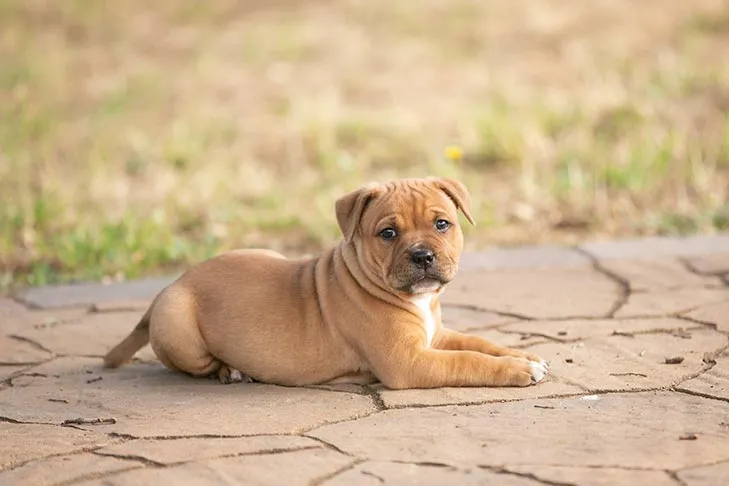Laying a solid foundation with basic training is absolutely crucial for your puppy’s future well-being and a harmonious life together. These early lessons not only equip them with essential manners but also strengthen the bond between you and your canine companion. When introducing the First Tricks To Teach A Dog, remember that consistency, patience, and positive reinforcement are your most powerful tools. Keep training sessions brief, engaging, and always conclude on a positive note to ensure your puppy remains motivated and eager to learn. If you notice your dog struggling or seeming “stubborn,” it’s often a signal to re-evaluate your pace or the value of your rewards. Perhaps you need to break down the steps further, or your dog needs a more enticing “paycheck” for a more challenging exercise.
The fundamental “Basic 5” cues are designed to set your puppy up for success, paving the way for any future advanced training endeavors. Imagine the possibilities: with dedicated effort and fun, you and your puppy could even become obedience champions one day!
The Foundation of Early Dog Training
To truly embark on the right paw, your puppy needs a clear understanding of your expectations. This clarity isn’t just about discipline; it fosters a sense of security, making puppies feel confident in their ability to meet the goals you set for them. Establishing these early boundaries and learning signals will also aid in handling specific situations, such as teaching tricks to teach a Belgian Malinois or other high-energy breeds.
The cornerstone of effective dog training should always be built upon positive reinforcement. This powerful method involves providing a reward immediately after your dog performs a desired behavior, thereby encouraging them to repeat it. The goal is not to bribe your dog into performing, but rather to use something they value to teach and solidify the behavior you want to see. This approach builds trust and enthusiasm for learning.
It is vital to avoid punishment methods, such as harsh leash corrections or yelling. Such tactics can confuse a dog, making them unsure of what is being asked and potentially leading to fear or anxiety. We cannot expect our canine friends to instinctively know what we want from them—much like we wouldn’t expect a toddler to tie their shoes without instruction. Patience is a virtue that will go an immense distance in helping your new puppy grasp appropriate behaviors.
Rewards, or “reinforcers,” can be anything your dog finds enjoyable. High-value food treats, often small pieces of something special like freeze-dried liver or even their regular kibble, are commonly used for training because they are easy to administer quickly. However, lavish verbal praise (“Good dog!” delivered in an upbeat tone) or a brief game with a favorite toy can also serve as powerful rewards. Dogs learn to appreciate praise when it’s consistently paired with tangible rewards. Some dogs also enjoy gentle petting as a form of positive reinforcement.
Puppies are ready to begin very simple training as soon as they come home, typically around 8 weeks of age. Always keep training sessions concise—ideally between five and ten minutes. Crucially, always end a session on a positive note. If your puppy is struggling with a new concept, conclude the session by reviewing a trick they already know, showering them with praise and a substantial reward for their success. Allowing your puppy to become bored or frustrated during training will ultimately be counterproductive to their learning process.
 Happy Labrador puppy enjoying outdoor play, demonstrating the positive outcome of early training.
Happy Labrador puppy enjoying outdoor play, demonstrating the positive outcome of early training.
Essential First Tricks for Your Dog
These foundational commands are the building blocks for a well-behaved companion, making everyday life smoother and more enjoyable for both of you.
Teaching Your Dog to Come When Called (Recall)
A reliable “come when called” (or recall) is arguably one of the most critical safety commands you can teach your dog. Begin recall training in a quiet, distraction-free indoor environment.
- Start Close and Positive: Sit with your puppy and clearly say their name or the cue word “come.” Each time you say the word, immediately give your puppy a treat. At this stage, they don’t need to do anything else! Simply repeating the word and offering a treat builds a positive association.
- Encourage Engagement: Next, drop a treat on the floor near you. As soon as your puppy finishes the treat, say their name again. When they look up at you, reward them with another treat.
- Gradually Increase Distance: Repeat this a few times. Once they consistently look at you when their name is called, start tossing the treat a little further away. The goal is for them to turn and face you when they hear their name. Important Note: Avoid repeating your puppy’s name multiple times if they don’t respond. This teaches them that they can ignore it. Instead, move closer and return to a step where they can easily succeed at responding to their name on the first call.
- Add Movement and Fun: Once your puppy reliably turns to face you, incorporate movement to make the game more exciting. Toss a treat on the ground, then take a few quick steps backward while calling your puppy’s name. Their natural instinct to chase will encourage them to follow you.
- Big Rewards for Coming: When they catch up, lavish them with enthusiastic praise, multiple treats, or a fun game with a tug toy. The experience of coming to you must always be a highly rewarding and joyful one.
- Progressing Outdoors: Continue building on these games by gradually increasing the distance and practicing in various locations. When training outdoors, always ensure you’re in a safe, enclosed area. Initially, keeping your puppy on a long leash can provide an extra layer of security.
When your puppy comes to you, resist the urge to immediately reach out and grab them, as this can be startling or frightening for some dogs. If your puppy is timid, kneel down, face them sideways (less confrontational), and offer treats as you gently reach for their collar.
 A well-behaved Cavalier King Charles Spaniel on a leash, ready for recall practice.
A well-behaved Cavalier King Charles Spaniel on a leash, ready for recall practice.
Mastering Loose-Leash Walking
In competitive obedience training, “heel” signifies a very specific position where the dog walks precisely on your left side with their head aligned with your knee, while the leash remains slack. For puppy training, the objective is often more relaxed: for your dog to walk politely on a loose leash without pulling or zig-zagging. Some trainers prefer cues like “let’s go” or “forward” instead of “heel.”
Regardless of the cue you choose, consistency is paramount. Always use the same word. Whether you prefer your puppy to walk on your left or right side is entirely up to you, but be consistent with your chosen position to avoid confusion.
- Leash Comfort: First, ensure your puppy is comfortable wearing a leash. This can feel strange initially, and some puppies may try to bite it. Counter this by giving your puppy treats every time you put the leash on.
- Starting Position: Stand next to your puppy with the leash in a loose loop. Reward them with several treats in a row for simply standing or sitting calmly beside your leg.
- One Step at a Time: Take one step forward. Encourage your puppy to follow by immediately giving another treat as they catch up to your side.
- Continuous Reinforcement: Continue giving treats to your puppy at the level of your knee or hip as you walk forward, reinforcing their position beside you.
- Correcting Pulling: If your puppy runs ahead, calmly turn in the opposite direction. Call them to you, and reward them when they return to your side. Then, continue walking. Gradually increase the interval between treats (e.g., from every step to every other step, then every third step, and so on).
- Sniffing and Resuming: Eventually, your dog will happily walk at your side on a loose leash. During walks, allow your dog plenty of time to sniff and explore their environment. When you’ve had enough sniffing time, give your chosen cue (“Let’s go!”) in a cheerful voice and reward them for returning to position and walking with you.
 An Alaskan Klee Kai puppy gracefully sitting in the grass, showcasing mastery of the sit command.
An Alaskan Klee Kai puppy gracefully sitting in the grass, showcasing mastery of the sit command.
How to Teach Your Dog to Sit
Teaching your puppy what “sit” means can be approached with two primary methods: capturing and luring.
Method 1: Capturing
Capturing involves reinforcing a behavior your dog offers naturally.
- Observe and Reward: Stand in front of your puppy, holding some high-value food or treats.
- Wait for the Sit: Patiently wait for your puppy to spontaneously sit. The moment their bottom touches the ground, say “yes” (a marker word) and immediately give them a treat.
- Encourage Standing: Take a step backward or sideways to encourage them to stand up again.
- Repeat: Wait for them to sit naturally once more, then immediately reward.
- Add the Cue: After several repetitions where your puppy is consistently offering a sit, you can begin saying “sit” just as they are in the act of sitting.
Method 2: Luring
Luring uses a treat to guide your dog into the desired position.
- Lure with a Treat: Get down in front of your puppy, holding a treat as a lure.
- Guide Up and Back: Place the treat directly in front of your puppy’s nose, then slowly lift it above their head and slightly back towards their tail. As they track the treat with their nose, their rear end will naturally lower into a sit.
- Reward the Sit: The moment their bottom touches the ground, allow them to eat the treat.
- Remove the Lure: After one or two repetitions with the food lure, remove the food from your hand and use just your empty hand to make the same motion. Continue to reward the puppy with a treat from your other hand after they sit.
- Add the Verbal Cue: Once they reliably follow your hand signal to sit, you can start saying “sit” right before you give the hand signal.
It’s crucial to never physically push or force your puppy into the sitting position. This can be confusing, uncomfortable, or even upsetting for some dogs, undermining their trust in you and the training process.
Guiding Your Dog to Lie Down
The “down” command, like “sit,” is a fundamental skill that can be taught using similar capturing and luring techniques.
Method 1: Capturing
- Create the Opportunity: You can wait for your dog to lie down naturally. Starting in a small, quiet, and less distracting room (like a bathroom) can help encourage this behavior.
- Capture and Reinforce: The moment your dog lies down, “capture” the behavior by immediately reinforcing them with a treat.
- Release and Repeat: Give them a release cue (like “OK” or “free”) to encourage them to stand up (a lure might be needed here initially). Then, wait for them to lie down again.
- Add the Verbal Cue: Once they are quickly lying down after standing up, you can begin saying “down” just before they perform the action.
Method 2: Luring
You can also lure your dog into a down position from a sit or stand.
- Lure Downward: Hold a treat in your hand to your dog’s nose and slowly bring it straight down to the floor, then slightly away from them.
- Reward the Contact: Initially, give the treat when your dog’s elbows touch the floor. This teaches them to lower their entire body.
- Empty Hand Signal: After a few successful practices, begin making the same motion with your empty hand, giving the treat only after they have fully laid down.
- Add the Verbal Cue: When they reliably follow your hand signal, start saying “down” as you move your hand.
As with sitting, never use force to put your dog into a down position. This can cause discomfort, fear, and may even lead to resistance in future training.
 A Staffordshire Bull Terrier puppy calmly lying down outdoors, a perfect demonstration of the 'down' command.
A Staffordshire Bull Terrier puppy calmly lying down outdoors, a perfect demonstration of the 'down' command.
Introducing the “Stay” Command
A puppy who understands the “stay” cue will remain in their current position (e.g., sitting or lying down) until you release them with another cue, known as the “release word.” “Stay” is a duration behavior, meaning the goal is to teach your dog to maintain their position for increasing periods, and eventually, at increasing distances.
- Teach the Release Word First: Before tackling “stay,” your dog needs to understand when they are “free” from a command. Choose a clear release word, such as “OK” or “free.”
- Practice Release: With your puppy in a sit or stand, toss a treat on the floor and say your chosen release word as they step forward to get the treat.
- Solidify Release: Repeat this a few times until you can say the word first, and then toss the treat after they begin to move. This teaches your dog that the release cue specifically means to move from their position.
- Introduce “Stay” (Duration): Once your dog knows the release cue and how to sit on command, put them in a sit. Turn to face them and immediately give them a treat.
- Gradual Time Increase: Pause for a very brief moment, then give them another treat for staying in the sit. Then, release them. Gradually increase the time you wait between treats. A helpful tip is to mentally recite the alphabet or count to yourself to track increasing intervals.
- Handle Mistakes Gracefully: If your dog gets up before the release cue, that’s perfectly fine! It simply indicates that they weren’t ready to stay for that duration. Simply make it easier by returning to a shorter time increment.
- Introduce “Stay” (Distance): Once your dog can stay in a sit for several seconds reliably, you can begin adding distance. Place them in a sit, say “stay,” take one small step back, then immediately step back to the puppy to give a treat and your release word.
- Build Distance Progressively: Continue building the distance incrementally, always keeping it easy enough for your dog to succeed. Practice both facing them and walking away with your back turned, as the latter is a more realistic scenario.
As your dog becomes more proficient with the “stay” command, you can gradually increase both the duration and the distance. The more solidly they learn it, the longer and further they can maintain their position. The overarching key to successful training is to avoid expecting too much, too soon. Training goals are best achieved in small, manageable increments. Ensure sessions are short, positive, and leave your puppy feeling successful.
Conclusion
Teaching your dog these first tricks to teach a dog provides more than just a list of commands; it builds a foundation of communication, trust, and mutual respect that will enrich your relationship for years to come. By consistently using positive reinforcement, keeping training sessions brief and positive, and demonstrating patience, you are equipping your puppy with essential life skills. From a reliable recall to polite leash manners and basic obedience like sit, down, and stay, these initial commands are crucial for their safety, happiness, and integration into your family. Remember, every successful step, no matter how small, contributes to a well-adjusted and joyful companion. Embrace the journey of discovery and growth with your dog, knowing that these early efforts pave the way for a lifetime of wonderful experiences together.
References
- American Kennel Club (AKC). (n.d.). Basic Training is Key to Giving Your Puppy a Strong Foundation for the Years Ahead. Original content retrieved from https://www.akc.org/expert-advice/training/basic-training-for-puppies-5-easy-cues-to-teach-first/
